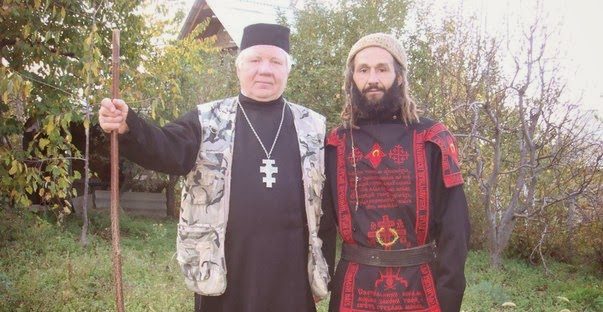The Gothic Church
Extremely small, this church was founded in 2008 by “Archbishop” Damyan (Akimov), in 2005 it separated from the “True Orthodox Church” under the jurisdiction of “Metropolitan of Moscow and All Russia” Raphael (Prokopiev). In the course of the proclamation of the “Gothic Local Church”, “Bishop” Damian acquired for himself the title “Archbishop of Chersonesos Tauric and all Gothia *”.
According to the idea of ”Bishop” Damyan (Akimov), the religious organization headed by him was the direct successor of the ancient Gothic diocese, which was located on the Crimean peninsula. The penetration of the nomadic tribe of the Goths on the territory of Crimea dates back to the end of the II – beginning of the III century, and the mass Christianization of the Goths dates back to approx. 323, when they were defeated in a military conflict with the emperor of the Roman Empire, Constantine the Great. Soon after, the Gothic diocese was established on this territory, and the first Gothic bishop, Theophilus, took part in the work of the First Ecumenical Council. However, for about a century the cathedral city of the Gothic diocese was located not in the Crimea, but on the continental territory between the Danube, the Dniester and the Black Sea. At the beginning of the 5th century, the residence of the Gothic bishop was moved to the Crimea (in the coastal region of Dori). Despite the fact that the Goths were assimilated around the ninth century, the Gothic diocese of the Patriarchate of Constantinople lasted until the eighteenth century, as long as the name “Gothia” meant the southwestern part of the Crimean peninsula. The ruler of the dynastic house of the principality of Theodoro was named with the title “αυθέντου πόλεως Θεοδώρους και παραtαλασσίας” (ruler (authentic) of the town of Theodoro and Pomorie). Palaeologus or descended from the Armenian family Gavras, which is nowhere mentioned in official sources. The language of the local Christians is believed to be a Germanic dialect, the source of which is a letter from the Austrian diplomat Ogier Gislen de Busbeck, dated 1562 and first published in 1589. The letter contains a list of 96 words and phrases, as and a song in Gothic that the diplomat heard from Crimeans who were in Constantinople.
Interestingly, claiming succession from the ancient Gothic diocese, which throughout its history came under the jurisdiction of the Patriarchate of Constantinople, the modern “Gothic Local Church” declared itself completely independent and autocephalous.
A characteristic feature of her liturgical practice is the performance of a Russian-language “Divine Liturgy according to the Gothic Order”, composed by “Archbishop” Damyan (Akimov).
The number of followers of the “Gothic Local Church” does not exceed three dozen people, united in four parish communities.
The church-administrative center of the considered non-canonical religious organization is located in the settlement Biyuk-Yankoy (Marble) of the Simferopol region (Crimea).
At the end of 2011, the church consisted of ten congregations in Ukraine. The central parish was in the village of Ternovka, where there is a temple and a cave temple in the Chelter-Marmara (Shuldan) complex. In January 2012, Bishop Alexy (Kiriarchis) joins the church with his Moscow community. All bishops of the GOC are equal. On January 29, 2013, Metropolitan Damian received the schema with the name David. Schemitropolitan David actively communicates and preaches to representatives of informal cultures, many communities are created from among the Rastamans.
On September 21, 2013, Metropolitan Alexy announced autocephaly of the Kherson Archdiocese and the Sugdean Metropolitanate, leaving the GOC and creating a new ecclesiastical jurisdiction called the “One Holy Cathedral Church of Christ.” After the annexation of Crimea to Russia in March 2014, David Akimov was forced to leave the peninsula, and Aleksey Kiriarchis began to take care of the Shuldan temple.









